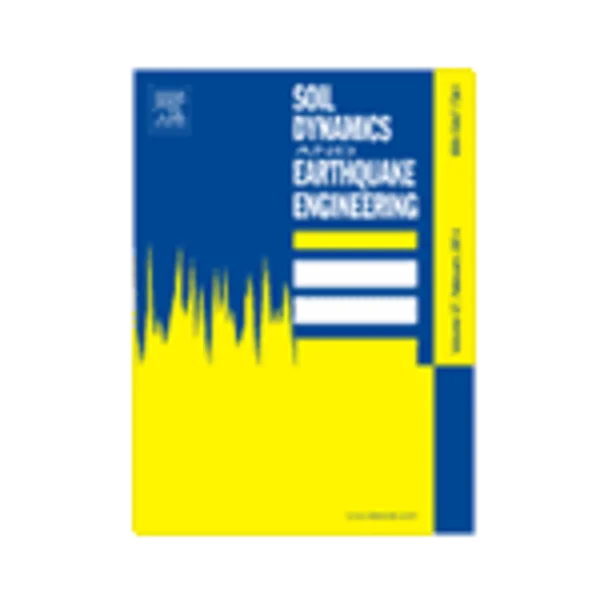-
evaluation of asce-41, atc-40 and n2 static pushover methods based on optimally designed buildings
جزئیات بیشتر مقاله- تاریخ ارائه: 1392/07/24
- تاریخ انتشار در تی پی بین: 1392/07/24
- تعداد بازدید: 1032
- تعداد پرسش و پاسخ ها: 0
- شماره تماس دبیرخانه رویداد: -
alternative static pushover methods for the seismic design of new structures are assessed with the aid of advanced computational tools. the current state-of-practice static pushover methods as suggested in the provisions of european and american regulations are implemented in this comparative study. in particular the static pushover methods are: the displacement coefficient method of asce-41, the atc-40 capacity spectrum method and the n2 method of eurocode 8. such analysis methods are typically recommended for the performance assessment of existing structures, and therefore most of the existing comparative studies are focused on the performance of one or more structures. therefore, contrary to previous research studies, we use static pushover methods to perform design and we then compare the capacity of the outcome designs with reference to the results of nonlinear response history analysis. this alternative approach pinpoints the pros and cons of each method since the discrepancies between static and dynamic analysis are propagated to the properties of the final structure. all methods are implemented in an optimum performance-based design framework to obtain the lower-bound designs for two regular and two irregular reinforced concrete building configurations. the outcome designs are compared with respect to the maximum interstorey drift and maximum roof drift demand obtained with the incremental dynamic analysis method. to allow the comparison, also the life-cycle cost of each design is calculated; i.e. a parameter that is used to measure the damage cost due to future earthquakes that will occur during the design life of the structure. the problem of finding the lower bound designs is handled with an evolutionary type optimization algorithm.
مقالات جدیدترین رویدادها
-
استفاده از تحلیل اهمیت-عملکرد در ارائه الگوی مدیریت خلاقیت سازمانی و ارائه راهکار جهت بهبود
-
بررسی تاثیر ارزش وجوه نقد مازاد بر ساختار سرمایه شرکت های پذیرفته شده در بورس اوراق بهادار تهران
-
بررسی تأثیر سطح افشای ریسک بر قرارداد بدهی شرکت های پذیرفته شده در بورس اوراق بهادار تهران
-
بررسی تأثیر رتبه بندی اعتباری مبتنی بر مدل امتیاز بازار نوظهور بر نقد شوندگی سهام با تأکید بر خصوصی سازی شرکت ها
-
تأثیر آمیخته بازاریابی پوشاک ایرانی بر تصویر ذهنی مشتری پوشاک ایرانی (هاکوپیان)
-
بکارگیری میراگرهای سربی- تزریقی (lead-extrusion dampers) درمقاوم سازی و بهبود رفتار لرزه ای پل های فولادی
-
بررسی تاثیرات توسعه گردشگری بر محیط زیست
-
اثرات شوک اسمزی بر تولید بتاکاروتن در ریزجلبک گونه dunaliella salina
-
بررسی تطبیقی ناخود آگاه یونگ و عالم مثال هانری کربن
-
بررسی امکان استفاده از سورفکتانت بجای استفاده همزمان از سورفکتانت و پلیمردر فرایند ازدیاد برداشت شیمیایی
مقالات جدیدترین ژورنال ها
-
مدیریت و بررسی افسردگی دانش آموزان دختر مقطع متوسطه دوم در دروان کرونا در شهرستان دزفول
-
مدیریت و بررسی خرد سیاسی در اندیشه ی فردوسی در ادب ایران
-
واکاوی و مدیریت توصیفی قلمدان(جاکلیدی)ضریح در موزه آستان قدس رضوی
-
بررسی تاثیر خلاقیت، دانش و انگیزه کارکنان بر پیشنهادات نوآورانه کارکنان ( مورد مطالعه: هتل های 3 و 4 ستاره استان کرمان)
-
بررسی تاثیر کیفیت سیستم های اطلاعاتی بر تصمیم گیری موفق در شرکتهای تولیدی استان اصفهان (مورد مطالعه: مدیران شرکتهای تولیدی استان اصفهان)
-
امکان سنجی استقرار استاندارد ایزو 21001 در سیستم آموزش کارکنان مطالعه موردی سازمان آموزش و پرورش استان ایلام
-
ضرورت و چگونگی تحول در آموزش مدرسه ای با تاکید بر نقش معلم
-
تاثیر عوامل مدیریتی بر افزایش بهره وری کارکنان کم سابقه
-
selection of the optimal fbg length for use in stress-strain state diagnostic systems
-
parental socio-economic status and e-crime among the undergraduate students of universities in south-west of nigeria




سوال خود را در مورد این مقاله مطرح نمایید :